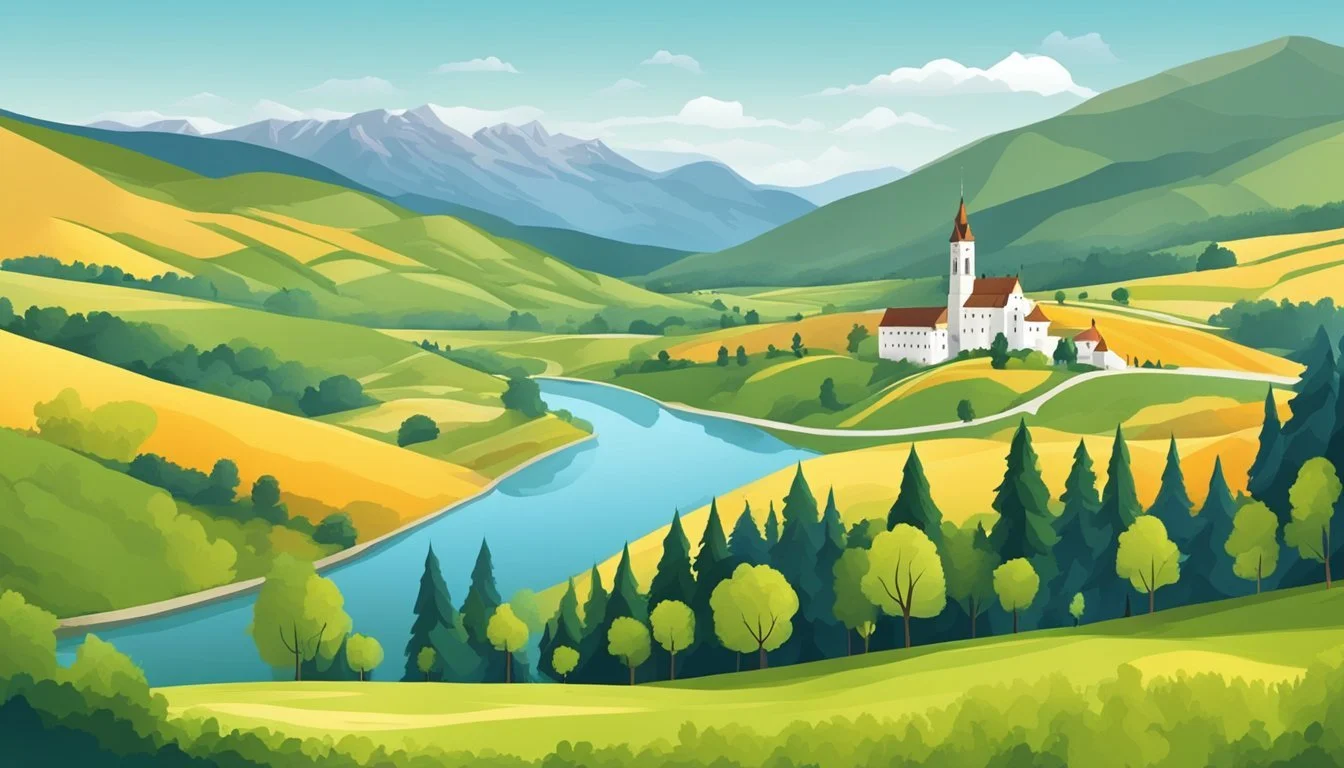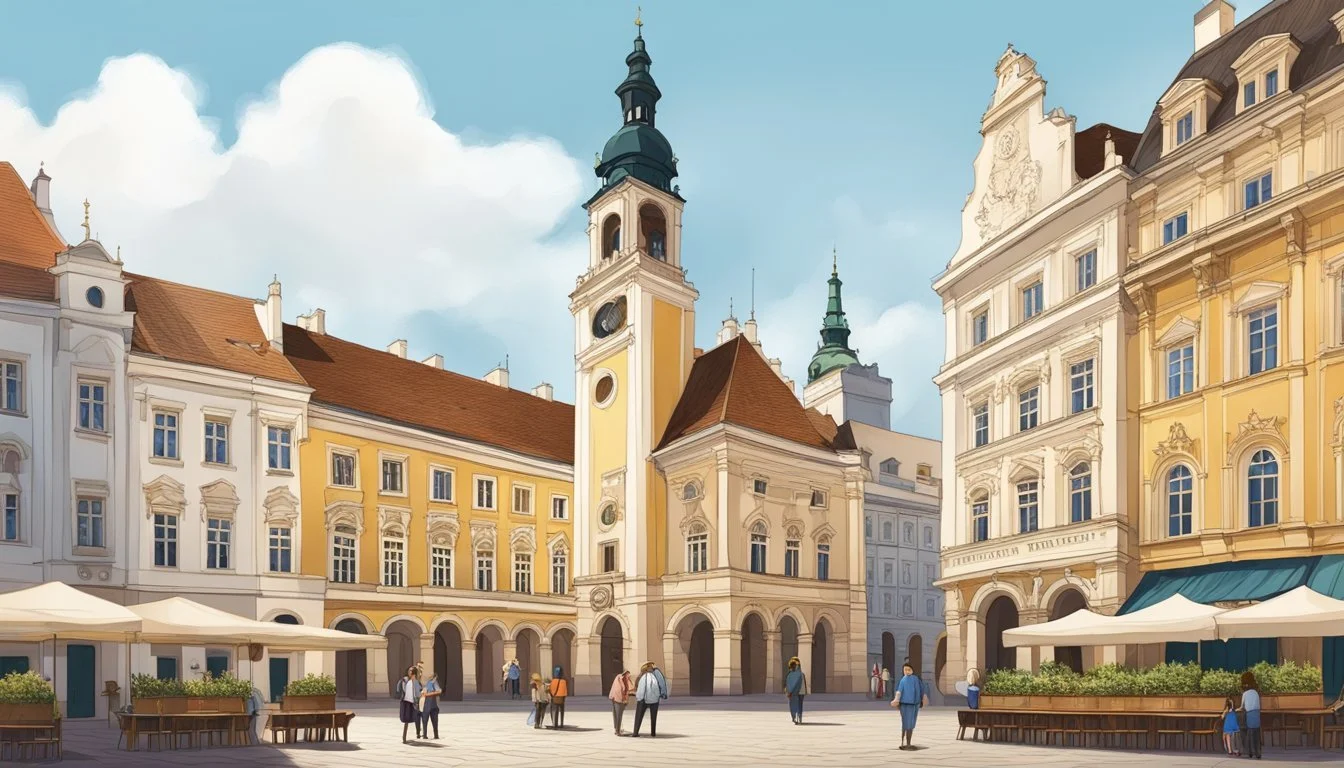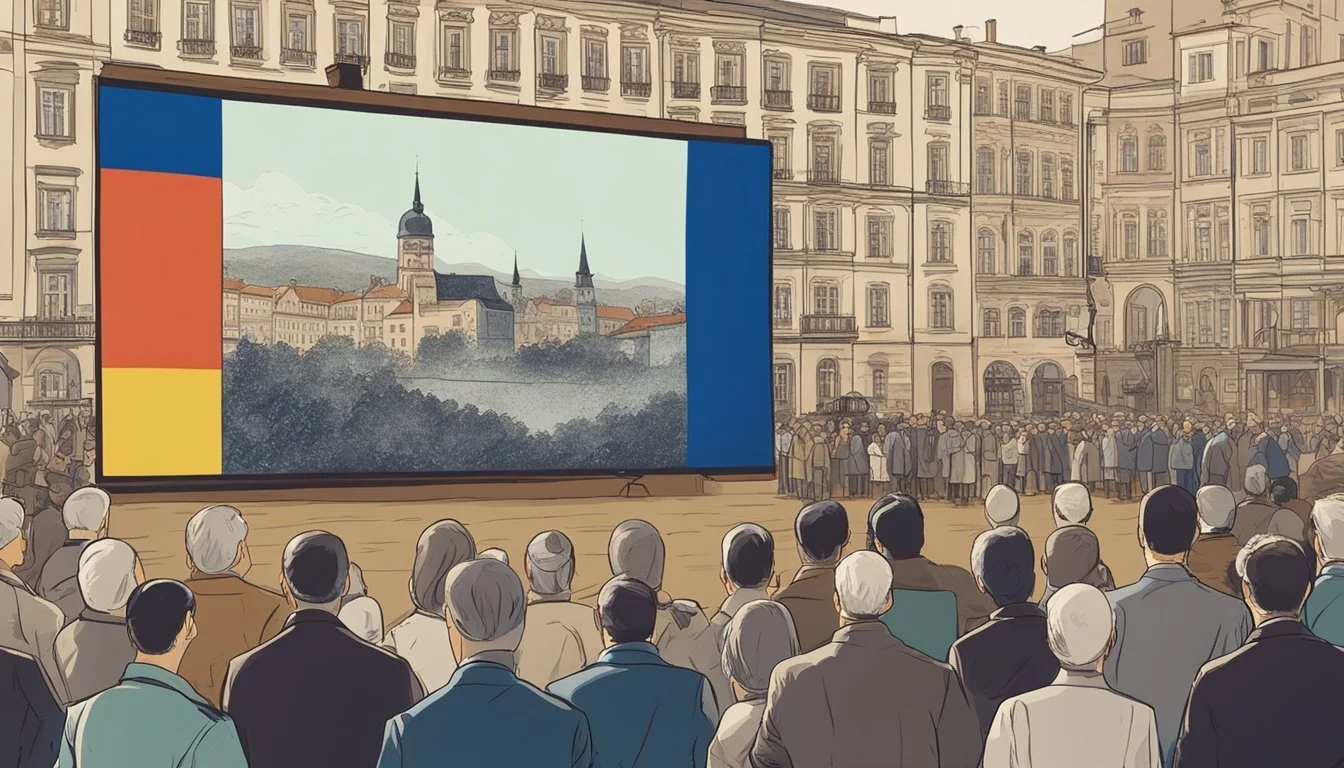9 Revealing Documentaries About Slovakia
Uncovering the Heart of Central Europe
Slovakia, a small country in the heart of Central Europe, has a rich tapestry of history, culture, and natural beauty that often goes unnoticed. Documentaries provide a unique window into the soul of this nation, offering viewers a chance to explore its hidden treasures and complex past.
These nine revealing documentaries about Slovakia offer invaluable insights into the country's heritage, challenges, and aspirations. From its stunning landscapes and medieval castles to its communist-era struggles and modern-day transformations, these films paint a vivid picture of a nation that continues to evolve and surprise. Through powerful storytelling and captivating imagery, they invite audiences to discover the many facets of this often-overlooked European gem.
1) The Velvet Revolution: A Documentary History
The Velvet Revolution of 1989 marked a pivotal moment in Czechoslovak history. This peaceful uprising led to the overthrow of the communist regime and the restoration of democracy.
Several documentaries have captured the spirit and events of this remarkable period. These films combine archival footage, interviews with key figures, and on-the-ground reporting to provide a comprehensive view of the revolution.
One notable documentary explores the role of dissidents like Václav Havel in inspiring the revolution. It showcases their courageous struggle against the oppressive regime and their vision for a free Czechoslovakia.
Another film focuses on the student demonstrations that sparked widespread protests. It depicts the energy and idealism of young Czechs and Slovaks who took to the streets of Prague, demanding change.
These documentaries also highlight the massive public demonstrations that followed. They show how half a million people filled Prague's streets and Wenceslas Square, forcing the communist government to step down.
By presenting personal accounts and historical context, these films offer viewers a deeper understanding of the Velvet Revolution's significance. They serve as valuable resources for those interested in Czech and Slovak history.
2) The Story of Bratislava's Old Town Hall
The Old Town Hall in Bratislava stands as a testament to Slovakia's rich history. Dating back to the 14th century, it is the oldest city hall in the country and one of Bratislava's most enduring stone structures.
The complex comprises buildings from various periods, with its iconic tower constructed around 1370. Over the centuries, the town hall expanded and evolved, incorporating architectural styles from different eras.
Today, the Old Town Hall houses the Bratislava City Museum, offering visitors a glimpse into the city's past. The museum's exhibits showcase the building's history against the backdrop of significant events and rulers that shaped Bratislava.
The Old Town Hall's courtyard and facade facing the Main Square (Hlavné námestie) are popular attractions in the historic district. Visitors can explore the unified complex of buildings, each telling a part of Bratislava's story.
An intriguing feature of the Old Town Hall is a cannonball embedded in its tower wall. Launched by Napoleon's soldiers over 200 years ago, it serves as a tangible reminder of the city's tumultuous past.
3) Slovakia's Hidden Caves: A Journey Underground
Slovakia boasts an extensive network of underground caves, with over 6,200 identified formations. This documentary explores the country's subterranean wonders, focusing on the most remarkable and accessible caverns.
The film takes viewers into the heart of the Slovak Karst system, a UNESCO World Heritage site renowned for its limestone caves and gorges. Cameras capture the stunning stalactites, stalagmites, and underground rivers that characterize these natural marvels.
Demänovská Cave of Liberty, one of Slovakia's most visited caves, features prominently in the documentary. Viewers witness its breathtaking rock formations and learn about its discovery and development as a tourist attraction.
The documentary also showcases Domica Cave, famous for its underground boat ride on the Styx River. This unique experience allows visitors to sail through winding passages and discover hidden corners of the cave system.
Expert cavers and geologists provide insights into the formation and significance of these underground spaces. They discuss ongoing exploration efforts and the potential for new discoveries in Slovakia's vast cave network.
The film highlights the importance of cave conservation and the delicate balance between tourism and preservation. It emphasizes the need to protect these natural treasures for future generations to explore and admire.
4) Tatra Mountains: Wildlife Conservation Efforts
The Tatra Mountains, straddling the border between Poland and Slovakia, are home to one of Europe's oldest forests and a diverse array of wildlife. This unique ecosystem has become a focal point for conservation efforts in recent years.
Bears, wolves, and lynx thrive in the Tatra's pristine wilderness, with bear populations particularly dense in this region. These large predators, long extinct in many parts of Europe, find sanctuary in the mountains' rugged terrain and dense forests.
Conservation initiatives in the Tatra Mountains aim to protect these species and their habitats. Efforts include monitoring wildlife populations, implementing sustainable forestry practices, and managing human-wildlife interactions.
Documentaries highlighting the Tatra Mountains often showcase the delicate balance between preserving nature and allowing responsible tourism. They provide viewers with insight into the challenges faced by conservationists and the importance of maintaining biodiversity in this unique European wilderness.
Through these films, audiences can witness the beauty of the Tatra's landscapes and gain an understanding of the ongoing work to protect its inhabitants. The documentaries serve as powerful tools for raising awareness about the value of wildlife conservation in this remarkable mountain range.
5) The Impact of The Prague Spring in Slovakia
The Prague Spring of 1968 had a profound impact on Slovakia, then part of Czechoslovakia. This period of political liberalization sparked hope for greater autonomy and reforms among Slovaks.
Many Slovaks embraced the ideas of "socialism with a human face" promoted by Alexander Dubček, a Slovak reformist leader. The movement inspired a surge of cultural and intellectual expression in Slovakia.
The Soviet-led invasion in August 1968 crushed these aspirations. Tanks rolled into Slovak cities, abruptly ending the brief period of openness and reform.
In the aftermath, Slovakia experienced a period of "normalization." This led to increased repression and a reversal of many reforms. Many Slovak intellectuals and reformers faced persecution or were forced into exile.
The events of the Prague Spring left a lasting mark on Slovak society. They shaped political attitudes and fueled desires for greater autonomy, which would resurface in later years.
The legacy of the Prague Spring continues to influence Slovak perspectives on democracy, freedom, and national identity. It remains a significant chapter in the country's journey towards independence and democratic governance.
6) Folk Traditions: Slovakia's Cultural Heritage
Slovakia's folk traditions form a vital part of its cultural identity. These customs are deeply rooted in the country's history and continue to shape its present-day culture.
Traditional Slovak folk dances and music play a significant role in preserving cultural heritage. Events like FOLK EXPO Slovakia showcase both traditional and innovative approaches to folk culture, educating audiences and fostering dialogue about folklore.
Slovak folk art is renowned for its intricate patterns and vibrant colors. These designs often adorn traditional clothing, which is still worn during special occasions and festivals.
Wooden churches, such as the one in Bodružal, exemplify Slovak folk architecture. These structures, some of which are UNESCO World Heritage Sites, reflect the craftsmanship and artistic traditions of the region.
Bagpipe culture is another integral aspect of Slovak folklore. It encompasses instrument-making, music repertoire, dance, and special verbal expressions. Bagpipe players are highly respected and often perform at community events.
These folk traditions are not merely relics of the past but continue to evolve and adapt in contemporary Slovak society. They serve as a source of national pride and help maintain a strong sense of cultural identity.
7) Journey Through the Danube: Slovakia's River Gateway
The Danube River serves as a vital artery through Slovakia, connecting the nation to its Central European neighbors. This documentary explores the river's significance to Slovak culture, economy, and history.
Viewers are taken on a journey along the Danube's banks, showcasing the picturesque landscapes and charming towns that dot its shores. The film highlights Bratislava, Slovakia's capital, which sits majestically on the river's edge.
The documentary delves into the Danube's role in trade and transportation, both historically and in modern times. It examines how the river has shaped Slovak industry and agriculture over centuries.
Ecological aspects of the Danube are also addressed, focusing on conservation efforts and the diverse wildlife that calls the river home. The film showcases the unique flora and fauna found in and around the Danube's waters.
Cultural traditions tied to the river are explored, including fishing practices, folklore, and riverside festivals. The documentary captures the essence of Slovak river life and its importance to local communities.
Through stunning cinematography and insightful interviews, this film provides a comprehensive look at the Danube's integral role in Slovakia's past, present, and future.
8) Liptov: Slovakia's Natural Wonder
Liptov, a region in northern Slovakia, captivates visitors with its stunning natural beauty. This documentary explores the diverse landscapes that make Liptov a true wonder of the country.
The film showcases the region's majestic mountains, including the Veľká Fatra, Chočské vrchy, and West Tatras. These ranges form a dramatic backdrop to Liptov's picturesque valleys and meadows.
Viewers are treated to breathtaking aerial shots of Liptovská Mara, a large reservoir that has become a popular summer destination. The documentary highlights how this man-made lake has transformed the area's ecosystem and tourism.
The region's numerous lookout points and viewpoints are featured, offering spectacular vistas of the surrounding mountains and Liptov's charming villages. These panoramic scenes showcase the area's natural splendor in all seasons.
Liptov's rich biodiversity is also explored, with footage of local flora and fauna. The documentary emphasizes the importance of conservation efforts to preserve this unique ecosystem for future generations.
9) Slovak Roma Communities: A Cultural Insight
Slovak Roma communities form a significant part of Slovakia's cultural tapestry. These groups have a rich heritage that often goes unnoticed by the wider population.
Roma people in Slovakia face numerous challenges, including poverty, segregation, and discrimination. Many live in marginalized settlements with limited access to basic services and opportunities.
Despite these hardships, Roma communities maintain vibrant traditions. Music and dance play central roles in their culture, with performances showcasing unique rhythms and colorful costumes.
Family bonds are particularly strong in Roma society. Extended families often live together, supporting each other through economic difficulties and preserving their cultural practices.
The Slovak government has implemented various projects to improve Roma living conditions. These initiatives focus on areas such as education, housing, and employment to foster greater inclusion.
Documentaries exploring Slovak Roma communities offer viewers a glimpse into this often misunderstood culture. They highlight both the challenges faced by Roma people and their resilience in preserving their identity.
Historical Context of Slovakian Documentaries
Slovakian documentary filmmaking has evolved significantly since the country gained independence in 1993. Filmmakers have explored themes of national identity, historical events, and social issues through their work.
Evolution of Documentary Filmmaking in Slovakia
Documentary filmmaking in Slovakia emerged as a distinct art form in the 1960s. During this period, directors experimented with new styles and techniques, often blending fiction and non-fiction elements. The fall of communism in 1989 marked a turning point, allowing filmmakers greater creative freedom.
After Slovakia's independence in 1993, documentary production increased. Filmmakers gained access to new funding sources and international co-production opportunities. This led to a wider range of topics being explored and higher production values.
Digital technology revolutionized Slovakian documentaries in the 2000s. Lower production costs enabled more independent filmmakers to enter the field. Online platforms expanded distribution possibilities, reaching global audiences.
Key Themes Explored in Slovakian Documentaries
Slovakian documentaries often focus on national history and identity. The Slovak National Uprising of 1944 features prominently, highlighting resistance against Nazi occupation. Films examine Slovakia's complex relationship with neighboring countries and its place in Europe.
Social issues are another critical theme. Documentaries tackle topics like economic transition, rural depopulation, and minority rights. Environmental concerns, particularly forest conservation, have gained attention in recent years.
Cultural heritage is frequently celebrated in Slovakian documentaries. Films showcase traditional crafts, folk music, and architectural treasures. These works help preserve and promote Slovakia's unique cultural identity to both domestic and international audiences.
Impact on Slovakian Culture
Documentaries have played a significant role in shaping Slovakian culture and public discourse. They have shed light on important social issues and influenced how Slovaks view their history and national identity.
Mirror of Social and Cultural Change
Slovakian documentaries have captured the country's transformation since the fall of communism. Films like "The Copper Tower" reflect the artistic spirit of the 1960s, showcasing the nation's cinematic heritage. More recent works explore modern challenges, such as consumerism in the Czech Republic, which shares cultural ties with Slovakia.
These films document changing social norms, economic shifts, and evolving cultural values. They provide a visual record of Slovakia's journey from a Soviet satellite state to a member of the European Union.
Influence on Public Perception and Policy
Documentaries have become powerful tools for exposing corruption and influencing public opinion in Slovakia. The film "The Killing of a Journalist" investigates the 2018 murders of a Slovak journalist and his fiancée, revealing widespread government corruption.
This documentary and others like it have:
Sparked public outrage and demands for accountability
Led to increased scrutiny of political figures
Encouraged civic engagement and grassroots activism
By bringing critical issues to the forefront, these films have helped shape policy debates and push for reforms in areas such as media freedom and anti-corruption measures.





